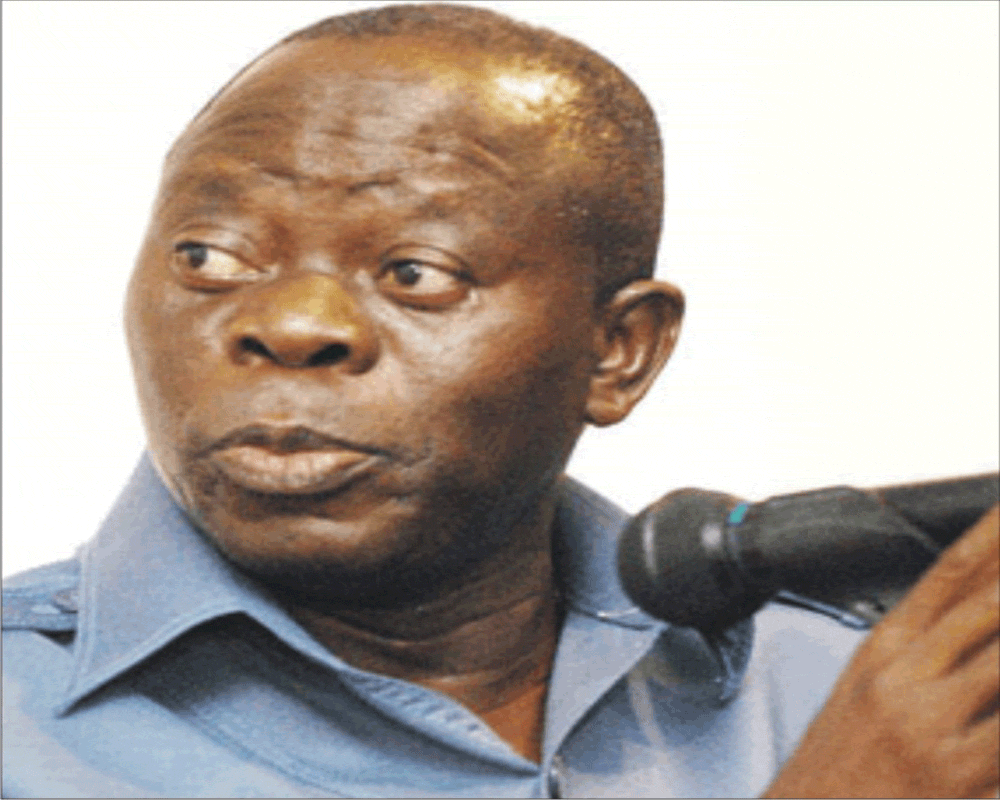Low Carrying Capacity, Bane of Tertiary Education In Nigeria
As the Joint Admissions and Matriculations Board, JAMB, conducted the 2019 pre- admission examination into the tertiary institutions in the country for both public and private universities, it is on record that the number of admission seekers have soared, beyond what it was in the past. So, when about 1.99 million candidates sat for the Unified Tertiary Matriculation Examination, UTME, as part of admission process, whereby available spaces for admission were pegged at 750,000, this is an indication that, for many candidates their success will not be a walk in the park, but one that will be achieved not only by dint of hard work and other variables.
In this piece, OLAWALE LAMINA looks at the odds against 1.99 million candidates who only have 750,000 spaces to fill in this academic year.
Carrying Capacity in a simple term can been defined as the overall availability of infrastructure, academic resources that support the convenient admission of certain number of students in an admission year. It also describes the admission space available to study a particular course vis a vis the ratio of lecturers to students, academic resources and the classroom space for sustainable learning.
So, when the figure of admission seekers for the 2019 Unified Tertiary Matriculation Examination hit the public domain, it left many wandering what the nation has in store for the teeming youths who, as a matter of yearly ritual, apply for one admission or the other to study in any university or higher institution of their choice, subject to their performance and the quota system, among other yardsticks.
The 2019 admission is certainly going to be one contest of many considerations. It is little wonder then that stakeholders are still calling for upgrade in carrying capacity, both for the federal and state universities, despite the increased drive by the private universities. At least, since its establishment in 1978, JAMB has never recorded the number of admission seekers like the one being witnessed this year. And this is an indication of the deep gap between the number of candidates seeking admission and the actual available space to accommodate them. It also stands to reason that the increase this year over and above the previous years may not be unconnected with the spillover of admission seekers who could not secure admission in the past.
It is important to understand that, if at the end of the admission exercise, only 750,000 got admitted , then about 1.240 candidates will be left to repeat the recurring circle in the coming year. It commonsensical to reason that, while the nation has continued to record steady growth in the population , the corresponding improvement in the carrying capacity is either tardy or static, except the approval to operate granted the private owners increases accordingly. Since 1999, that operational licences were granted private universities, it is true that some level of impacts have been achieved through infrastructural development and capacity building, but alas, development , like a wild fire , soon caught up with the present dispensation. And, amid opportunities created by the private universities for admission, many parents were unable to patronize them because of the high cost of admission. This was the case with the first generation of private universities in the country, namely Madonna, Igbinedion and Babcock universities. And, even now that we have about 77 private varsities, JAMB candidates are yet to comfortably reap the dividends of privatization of universities, based on factors such as cost and available spaces , apart from requisite academic performance expected of candidates.
It is also on record that private universities are yet to meet up with the quota given to them for admission. For instance, the National Universities Commission, (NUC) data of 2013,private varsity were only able to admit 19,254 candidates . This is against their expected quota of 67,009. Analysts have attributed high tuition fee as the major reason of the under enrolment in the private varsities. Even as JAMB exercise discretion in posting some candidates on merit to private universities, exorbitant fees made it impossible for some of the candidates to take advantage of the provisional offer of admission into the selected universities. When a parent is expected to pay a minimum of N350,000 to secure an admission for a child or ward ,this is certainly a factor beyond carrying capacity but economic reason standing in the way of a candidate’s admission.
Worthy of notice in the attainment of carrying capacity is the fact that, there is need for political will that will ensure consistency in the gradual build up of the all important capacity of the Nigerian universities. Before the present state of affairs, it will be recalled that, under the former President Goodluck Jonathan administration, the carrying capacity of the Nigerian university reportedly increased from 600,000 to 1 million within in a period of three years. The then supervising Minister of Education and current governor of River State, Governor Nyesom Wike, when declaring the Education Sector transformation in Abuja stated that the feat was achieved through establishment of 14 new federal universities and upgrading of Nigerian Police Academy to a degree awarding status, establishment of National Maritime University, Okerenkoko, which saw increase in the number of federal universities, from 28 – 41. Apart from the universities, polytechnics in the country also benefited from the past administration’s efforts as there was increase in enrolment from 338,040 in 2010 to 376,710 in 2013. The then Minister remarked that,” consistent federal government programmes and support for education has led to improved enrolment.”
As a departure, it is on record that, in 2017 over 1.8 million candidates registered for the UTME with limited 850,000 space available to accommodate them. At the end of the admission process that year, still about 850,000 candidates were left out of the admission due largely to inadequate carrying capacity and partly based on factors other than poor performance.
As the number of UTME candidates increase each year, the federal government is expected to be proactive in making sure existing universities continue to get more budgetary boost that will in turn cater for the backlog of the previous admission seekers, while government would be expected to give more priority to vocational education as a way of reducing the toll on university and other tertiary admissions in the country.
There have been occasions where candidates with impressive scores failed to secure admission due to limited spaces, even as some university will devise means of disqualifying suitable candidates. Some of the strategies put in place by Nigerian Universities, JAMB, NUC include the quota system, which sometimes favour some educationally disadvantaged candidates to the detriment of the brilliant candidates who scored higher and yet could not secure admission. Both the state and the federal quotas play out as a way of managing low carrying capacity of the Nigerian tertiary institutions because something must give. This is also an eye opener to the kind of priority a government attaches to education in a regime. Based on policy summersault, expansion programme by one administration soon give way to stifled growth by another for different reasons.
From available statistics, while candidates number of enrolment continues to rise , there has been no corresponding increase in admission spaces. But, the only increase recorded so far come from the private universities which continue to spread across regions.
Accodring to JAMB annual examination statistics , in the past five years , the average number of candidates who registered for the UTME is 1.5 million, and sadly, the universities, polytechnics , monotechnics and colleges of education only have a limited spaces of 700,000. Even as the federal government continues to grant approval for the establishment of more private universities, it is expected that the government would put in a consistent expansion programmes for the existing federal institutions.
And, despite the fact that , the federal government in coping with the situation had once asked candidates to choose between a polytechnic and a college of education as an option of securing admission, which was the reason behind the UTME it is not clear how many candidates are willing to settle for the second fiddle. This is against the backdrop of existing parity among universities, polytechnics and colleges of education.
Concerning other efforts being made to cushion the effects of the short fall in admission of eligible candidates, Eden Global Business School, EGBS, on its part acknowledged a remarkable challenge with carrying capacity among Nigerian higer institutions of learning, even with total carrying capacity pegged at 750,000 The EGBS President, Mr.Tunji Adepoju, lamented the fate of over one million admission seekers, some of whom had been reaped off by charlatans, based on their desperations to secure admission into higher institutions of their choice
By the efforts of the past administration, it is instructive that the present federal government needs to muster political will and put in place an initiative that supports adequate funding and consistent expansion of infrastructure. But, in a situation whereby infrastructural development remains static, this will also lead to demand being more than supply which is capable of creating a glut in the admission process. The government would need to wake up to address adequate funding of the education sector through increased budgetary allocation to check the incident of low carrying capacity in the country.
Analysts have wondered why government on one hand is emphasizing basic education without anticipating increased interest in furtherance of acquisition of knowledge at higher institutions level. They argued that this is perhaps one of the credible reasons Nigerian youths will continue to seek educational opportunities outside the shores of the country, despite the financial implications of such moves.



